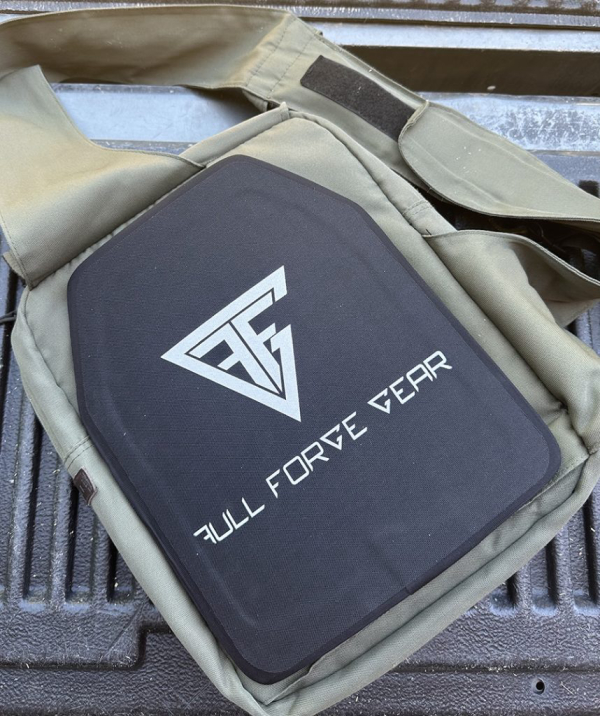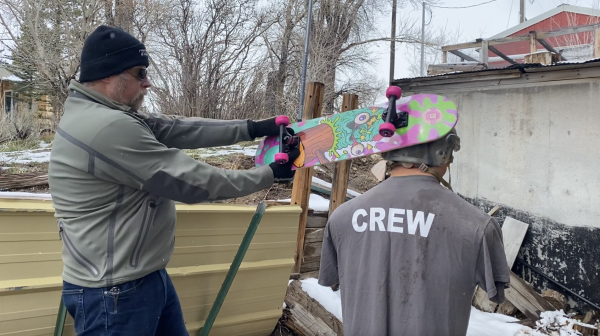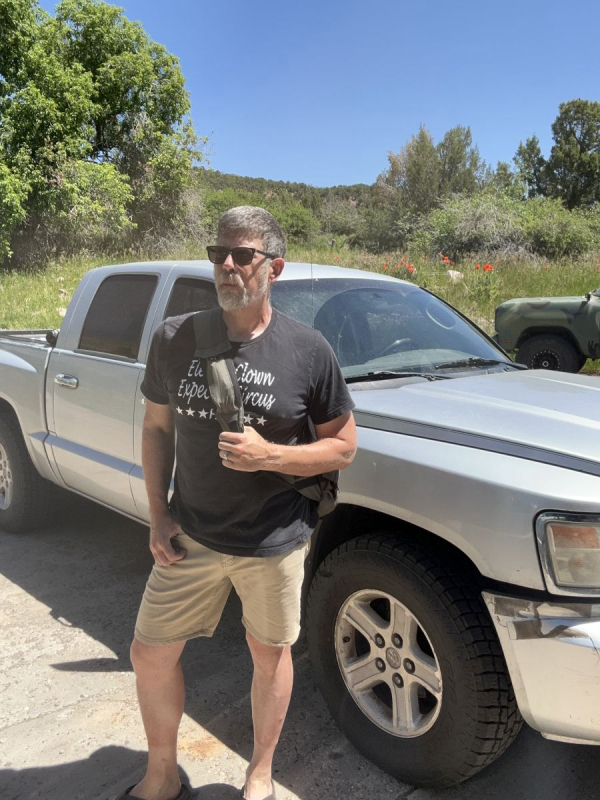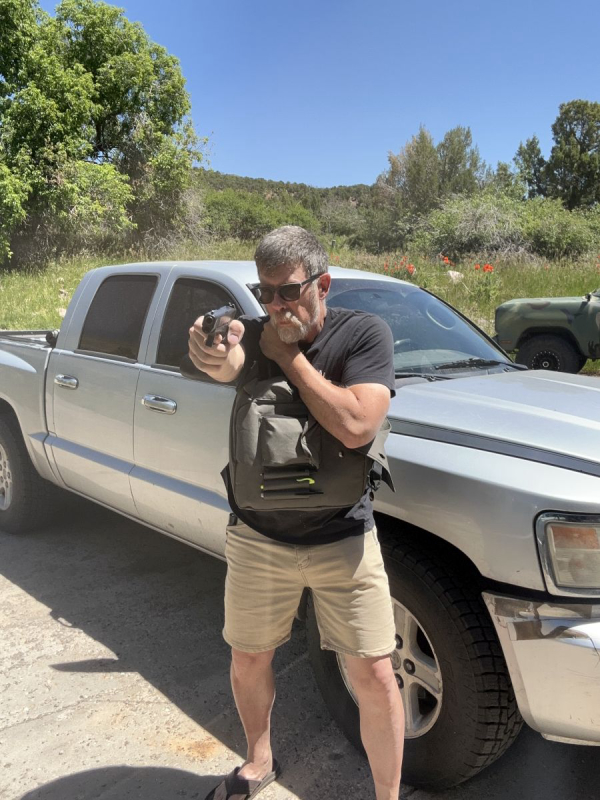Today’s feature comes to us from our companion service, Shooting News Weekly. All images from Paul Markel.

Like most red-blooded American boys from Generation X, I was first introduced to the concept of personal body armor by my father. I was nine years old and my dad drove us to the local sporting goods store to buy an athletic supporter and cup so I could start Little League baseball the following week. The team supplied the helmets, but we were on our own when it came to crotch armor. Of course, back then boys knew that they were boys and that it was important to protect the twigs and berries from errant fastballs and grounders.
Fast forward to 1987 when I began as a United States Marine and was introduced to the PASGT (Personal Armor System for Ground Troops) helmet and flak vest. Throughout my time in the Marines, I learned to develop a love/hate relationship for what we affectionately referred to as our “Kevlars and flaks.”
During training, the helmets and vests were heavy, uncomfortable, and hot. However, during actual operations, we quickly learned to ignore the discomfort and appreciate the comfort of having armor between our skulls and thoraxes and any incoming rounds. Huddling in a trench in the desert as artillery and mortar shells flew through the air above me, I was more than appreciative that the Corps had issued me body armor.
The 21st Century: A Brave New World
If you were to look back on what the media produced as late as the 1950’s you would have believed that by the 21st Century, Americans would be commuting in flying cars, the world would be bright and shiny, and there would be chrome everywhere. We should have colonies in outer space by now, underwater cities, and personal robots to assist mom with the mundane house chores.
Of course, none of that is possible when your world is run by socialists and corrupt crony capitalists. So, here we are, two decades into the 21st Century and the world is a more dangerous and turbulent place than it was when I first strapped on that athletic cup and supporter.
I suppose I’d be a conspiracy nut if I point out the perfectly-timed and coordinated attacks on our American cities during the summer of 2020. You know, the fiery, but mostly peaceful riots. The pallets of bricks and garden stones left on the streets in the cities that were under siege were just coincidences. I mean, construction companies leave pallets of bricks laying around all time.
Well, it isn’t 2020 anymore and the BLM/Antifa movement is so yesterday. In 2024 we have the more au courant free Palestine movement to “protest” at the school you’re paying $200,000 for your kid to attend. And don’t think the new movement will stay confined to campus. It will move to a city near you, if it hasn’t already.
How about the poor, oppressed masses who have flooded across the border on President Corn Pop’s watch? They are all just here for a better life, right? They want to experience the American dream. Well, maybe not all of them. (It only took only four illegal immigrants to kill 139 and injure 180 more in the concert hall in Moscow in March of 2024.)
Given the latest news and the history of the 21st century thus far, it would seem reasonable to the casual observer that the American citizens might have serious interest in personal protective equipment that’s capable of stopping bullets and other projectiles.
Helmet or Body Armor: Which is More Important?
At SHOT Show 2024 I was in the Full Force Gear booth and the staff introduced to me a couple of new products in addition to their bags, backpacks, and gun cases…their line of plate carriers, armor plates, and helmets. They said that the new products would be out in quarter two or three of this year. True to their word, I now have in my possession an OD green nylon plate carrier, a pair of Level IV plates, a single Level IIIA plate and a Level IIIA ballistic helmet.
Despite the abject political and tactical failure of the stupidly named Global War on Terror, numerous positives emerged from the conflict, in addition to trauma gear and training, greatly improved body armor and helmets that were developed for the troops. I can say without reservation that the current body armor and ballistic helmets are head-and-shoulders above those my peers and I were issued during the Cold War.
Plate carriers, nylon loader-bearing vests designed to hold armor plates as well as magazines, first aid kits, radios, etc. have become all the rage amongst the American gun culture. Hell, even the armed protesters donned plate carriers and load bearing gear to march for justice for Breonna Taylor.
The plate carriers themselves are stitched nylon and not all that expensive. It’s the Level III or IV plates that will set you back several hundred to a thousand dollars depending on where you purchase them.
When it comes to modern “ATE” (above the ear) helmets, you have either ballistic models that are rated to stop fragmentation, handgun bullets, and buckshot (Level IIIA) or non-ballistic models that are designed to simply protect your melon from blunt force trauma and impact from flying objects.
But let’s say that you’re on a budget and can only come up with enough Republic Credits for either a helmet or a carrier with plates. Which one would be the most important piece of gear in the event of civil disorder, you know “fiery, but mostly peaceful” riots?
Your Brain Housing Group
Your head, skull, grape, melon, etc. is essentially your brain housing group. For somewhere around 3,500 years, humans have been wrapping their heads in all manner of materials to protect their noggins during hand-to-hand combat. The Trojans and Spartans wore helmets as did the Roman Legions who came much later. By protecting your head with 3½ pounds of Kevlar, you’re simply carrying on a tradition that’s been going on since 1000 years before the birth of Christ.
While a modern ballistic ATE helmet won’t stop a straight-on hit from a rifle round, (there were numerous instances during GWoT of soldiers and Marines surviving bullet strikes to the helmet) the helmet will tremendously reduce the blunt force trauma from objects and impact from other incidents, such as vehicle collisions, etc.
My first crowd control experience came during my very first year as a police officer in 1992. There were no cell phones or internet. The Ku Klux Klan had applied for a permit to hold a rally, which was granted. Soon word got out to college campuses all over Ohio and flyers were printed and distributed to colleges within two to three hours of the march site. “Join Us! Smash the Klan!”
On the day of the Klan rally, about a dozen Klan members and supporters showed up. Approximately three hundred counter-protesters arrived on coachliner buses to speak out against them. I was one of about eighty law enforcement personnel called in by the local sheriff for assistance that day.
Although we arrested several anti-Klan protesters who were in possession of knives and handguns, the primary projectiles being thrown by the crowd were glass bottles, C and D cell batteries, spark plugs (for real), and pieces of broken bricks. If you look at the 2020 Summer of Love and other recent history, not much has changed.
A D-size battery or a glass beer bottle, if it hits you in the chest or back, would hurt, but it wouldn’t take you out. The same object impacting your head could very well split your skin, causing serious bleeding (even small head wounds bleed like crazy) or cause significant blunt force trauma. Perhaps someone runs up behind you and attempts to “brain” you with a skateboard.

Pause for a moment to think about that. You might be holding a $2500 custom super-blaster when a Grievance Studies major with a beer bottle or chunk of brick tries to take you out with a well-placed throw to your khaki ball cap. If you have body armor, but nothing to protect your head, you might be more vulnerable than you realize.
Why Not Both?
The good news for American citizens is that you don’t need permission from your government to purchase PPE and that includes body armor and helmets (though there are those who would like to change that). As mentioned earlier, I have almost four decades of experience wearing helmets and armor so I have a pretty good feel for what’s quality gear and what isn’t.
The helmet and plates from Full Forge Gear have been tested and certified by an NIJ lab, so no, I didn’t take them out and shoot them myself. What’s most amazing about the plates is their weight. The Level IIIA plate is only 1.8 pounds and the Level IV is 5.7 pounds per plate. For comparison, Level IV plates are rated to stop a .30-06 round as well as 5.56mm “green tip” steel core penetrator rounds. These plates are “constructed from advanced composite materials and ballistic ceramics for maximum strength and durability.”
I put the Level IIIA plate in the secret compartment of my daily carry sling bag which is used for my laptop, etc. The extra 1.8 pounds is barely noticeable and now I have a hasty barrier that I can put between myself and trouble.


As for the nylon plate carrier from Full Forge Gear, I found it to be high quality with padding in all the right places. The front and back are covered not only with MOLLE slots to mount gear, but the soft-sided hook and loop. I found with the plates in place, the carrier was as comfortable as you could expect and, when fitted properly, did not hinder normal movement.
As for the brain bucket, the FFG ballistic helmet is a standard configuration ATE helmet which means that it will accept all of the common accessories for hearing protection, lights, and night vision gear. The harness and padding were very comfortable and I was able to put the helmet on over my standard configuration Walker Razor electronic ear pro. The fact that the helmet comes with a Multicam cover is just icing on an already sweet cake.
Do you have to have personal body armor? No. You don’t have to own a rifle either, but I would recommend it. A home defense gun with no armor is like having a sword with no shield. Ultimately the choice is up to you. I would hope, like Indiana Jones, that you would choose wisely.
— Paul Markel, Associate Editor, the Outdoor Wire Digital Network